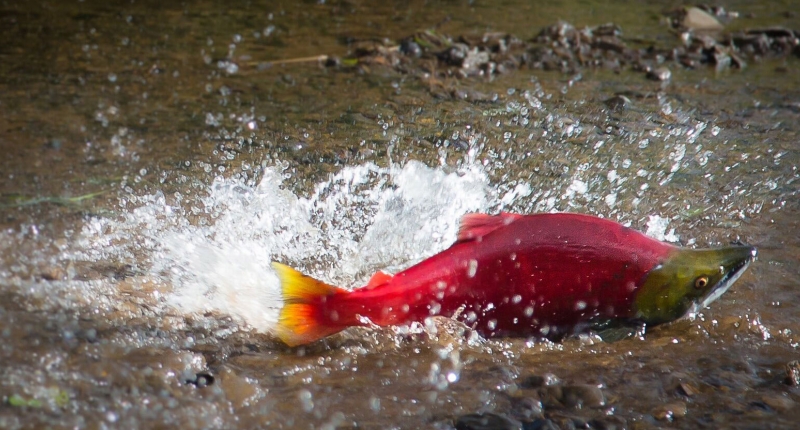Podcast: Alaska's Exceptional Salmon Data

Of all the fish people eat, salmon seem special. They’re celebrated meals, cultural icons, and incredibly important species in ecosystems around the world.
In Alaska, salmon’s importance to nature and people is exceptional, and the stories told about them are immeasurable. One kind of story that is rarely told, however, is about something that is literally measurable: Alaska’s data on salmon.
In this podcast edition of NCEAS Portraits, we tell two stories of Alaska’s exceptional salmon data and why they matter for the present and future of Alaska’s salmon and people.
Part 1 is a story of an incredible amount of data that is helping scientists make sense of a peculiar trend – Alaska’s salmon have been shrinking.
Part 2 is a story of how data may or may not be a currency of empowerment in decision-making about salmon, particularly when it comes to conserving salmon and preserving an important way of life for many Native Alaskans, subsistence fishing.
These stories come from the State of Alaska's Salmon and People project, an endeavor co-led by NCEAS and Nautilus Impact Investing to make salmon data more accessible for decision-making and to draw a more complete picture of the state of Alaska's salmon and the communities who rely on them.
Interviews (in order of appearance):
- Bert Lewis, commerical fisheries regional supervisor, Alaska Department of Fish and Game
- Krista Oke, postdoctoral researcher, University of Alaska Fairbanks
- Nick Kameroff, in-season manager, Kuskokwim River Intertribal Fish Commission
- Michael Jones, professor of quantitative fisheries, Michigan State University
- Janessa Esquible, fisheries biologist, Orutsararmiut Native Council
